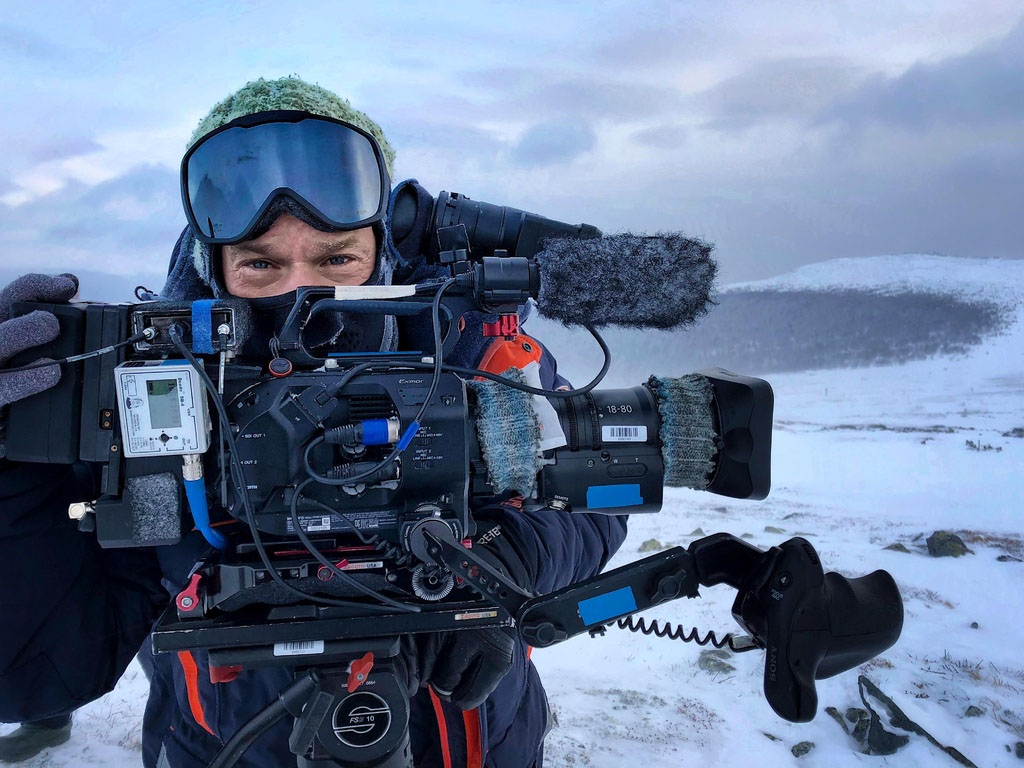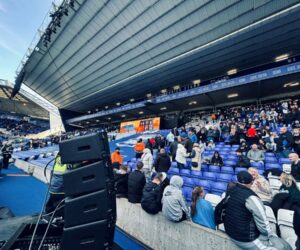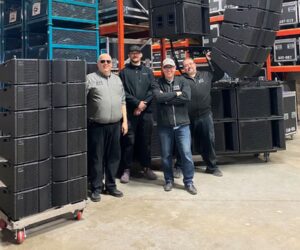Cinematographer Evan B. Stone and sound mixer Mike Curtis employ a variety of Lectrosonics wireless gear for capturing production audio on the hit discovery+ television series Expedition Unknown, including includes the WM watertight digital hybrid transmitters for the talent, four MTCR recorders, LR digital hybrid receivers, SMQV digital hybrid transmitters, an LT transmitter for the camera hop, and a legacy UM400A transmitter and R1A receivers for IFB.
“I’m a DP who really cares about audio,” Stone says. “My life is a series of sound bites and each one needs to have quality sound. I ‘listen’ to a story as I shoot. It is possibly the most important element for telling stories.”
An episode in Western Siberia took Stone, Curtis, host Josh Gates and crew to investigate the mysterious Dyatlov Pass incident, which Stone described as “Russia’s equivalent of the JFK assassination,” in which nine polytechnic institute students on a winter hiking expedition died under bizarre circumstances in February 1959. He described the shooting situation as “really severe weather, and I had [the receiver] just freestyle on the camera.” The Lectrosonics systems kept working reliably even in the frigidly cold temperatures of the Ural Mountains.
Stone’s interest in audio quality goes back to his start in filmmaking. The son of Academy Award-winning producer and TV commercial director Arnold (Arny) Stone (The Critic, with Mel Brooks), his first role as a NABET member was as a boom operator on the production of 1988’s Torch Song Trilogy starring Anne Bancroft and Harvey Fierstein. Even as his career later grew toward doing camera work, he kept a mind for audio, stating that he thinks about the sound in his shots as much as he does about lenses.
“A lot of camera operators don’t care about the sound — it’s the sound person’s problem — but not me,” he says. “I always have my buds in my ears, listening. It gives me a lot of confidence.” Stone has applied his audio-centric approach in shooting, directing, and/or producing episodes of Ghost Nation, True Life, The Amazing Race, and many other TV shows.
True to the series name, shooting Expedition Unknown involves shooting in wild, inhospitable, and sometime hazardous locations, like searching for El Dorado — the legendary Lost City of Gold — in a Colombian jungle, scuba diving to look for the alleged treasure of New York bootlegger/gangster Dutch Schultz, and exploring 4000-year-old tombs in Egypt. Stone and Curtis both note Lectrosonics durability, toughness, and consistency of quality throughout these ordeals. Stone: “The gear is top shelf. The best professionals use it, and there’s a reason why.”
They also point out that a unique feature of EU is that the DP also often appears on camera in many of the adventures. Gates and Stone wear WM transmitters because the devices are watertight, and they often get wet. Sometimes quite wet. Local historians, geographers, librarians, etc. are fitted with the SMQV transmitters for their on-camera appearances. For back-up or out-of-range shots on motorcycles, in airplanes, in tunnels, etc., they use SPDR personal digital recorders. The beltpack units all work with Sanken COS-11 lavalier mics.
In this period between Expedition Unknown seasons, Stone’s next project is in post-production. It’s a family effort with his brother Drew Stone and executive produced by his dad Arny, a feature film documentary called The Jews and the Blues. It’s a look at how Jewish musicians in America, Israel, and elsewhere have adopted the blues music genre as a vehicle for expressing soulfulness and spirituality in their lives.




















